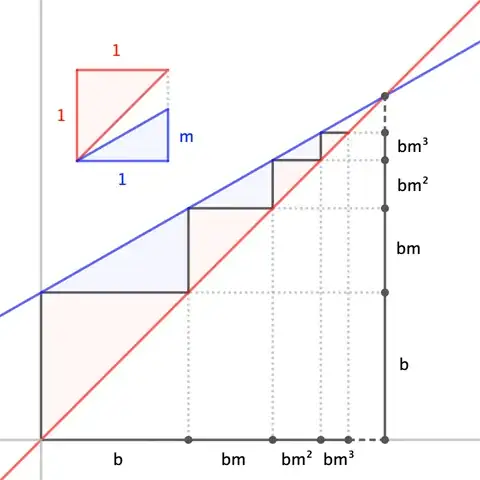The solution for the system of linear equations of $y = x$ and $y = mx + b$ is
$$x=y= \frac{b}{1-m}.$$
I noticed that this is also the sum of an infinite geometric series, where the first term is $b$ and common ratio is $m$ (granted $m$ is less than $1$):
$$ \frac{b}{1-m} = b + bm + bm^2 + \cdots bm^n + \cdots$$
Is this all a big coincidence or is there some deeper meaning to this relationship?
